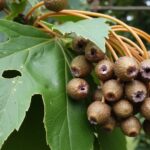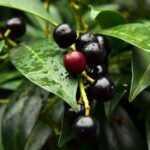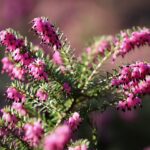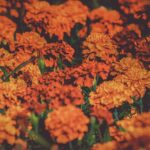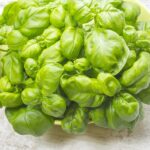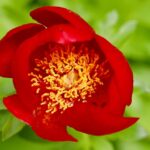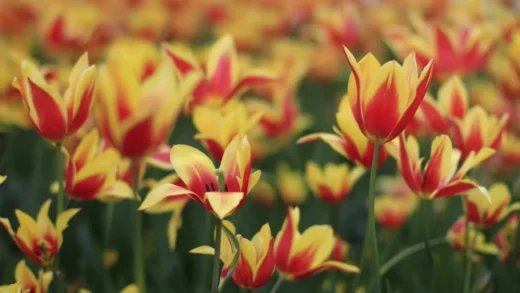One of the most compelling reasons to include blue eryngo in a garden is its exceptional resilience and general freedom from the common diseases and pests that afflict many other perennials. Its robust and rugged nature, characterized by tough, often spiny foliage and stems, provides a formidable natural defense against a wide array of potential threats. This inherent fortitude means that gardeners can enjoy the plant’s unique architectural beauty without the constant need for vigilance or chemical intervention, making it a truly low-maintenance and sustainable choice for diverse garden settings.
While the plant is remarkably trouble-free, it is not entirely immune to problems, with the vast majority of issues arising not from pathogens or pests, but from improper growing conditions. The single greatest threat to the health of a blue eryngo is root rot, a fungal disease that is almost exclusively caused by planting it in soil with inadequate drainage. This underscores the critical importance of site selection and soil preparation, as preventing this condition is far easier than attempting to cure it. Understanding that cultural practices are the primary line of defense is key to its successful cultivation.
Pest infestations are rare and typically minor. The plant’s texture and composition make it unpalatable to most grazing animals, including deer and rabbits, which often bypass it in search of more tender fare. While some sap-sucking insects like aphids may occasionally appear on new growth, they seldom cause significant damage and are often kept in check by natural predators in a healthy garden ecosystem. This resistance to pests further solidifies its reputation as a self-sufficient and worry-free perennial.
In essence, a proactive approach focused on providing the right environment is the most effective pest and disease management strategy for blue eryngo. By ensuring full sun, excellent drainage, and good air circulation, you create conditions in which the plant will thrive and its natural defenses will be at their strongest. This preventative care allows the gardener to avoid reactive treatments, fostering a healthier plant and a more balanced garden ecosystem.
Common fungal diseases
Although blue eryngo is generally disease-resistant, it can occasionally be susceptible to certain fungal issues, particularly when grown in less-than-ideal conditions. The most prevalent of these are leaf spot diseases, which manifest as small, discolored lesions on the foliage. These spots may be brown, black, or purplish and are often more of a cosmetic issue than a serious threat to the plant’s overall health. They are more likely to occur during periods of prolonged wet weather or in gardens where plants are overcrowded, leading to poor air circulation.
To manage fungal leaf spots, the best approach is prevention. Ensure that your blue eryngo is planted with adequate spacing between it and its neighbors to allow air to move freely around the foliage, which helps it dry quickly after rain or irrigation. It is also advisable to water the plant at its base using a soaker hose or watering can, rather than using overhead sprinklers, to keep the leaves as dry as possible. If leaf spots do appear, you can remove and dispose of the most heavily affected leaves to help reduce the number of fungal spores available to spread.
Powdery mildew is another fungal disease that can sometimes affect blue eryngo, though it is less common. This disease appears as a white, powdery coating on the surface of the leaves and, like leaf spot, is most prevalent in humid conditions with poor air circulation. While it can look unsightly, it rarely causes severe damage to the robust blue eryngo. The same preventative measures of ensuring good spacing and avoiding wet foliage are effective in minimizing the risk of powdery mildew.
In almost all cases, the use of chemical fungicides is not necessary or recommended for managing these foliar diseases on blue eryngo. The plant is typically strong enough to withstand these minor infections without a significant impact on its vigor or flowering. By focusing on creating a healthy growing environment that discourages fungal growth, you can keep your plants looking their best through simple, sound horticultural practices.
Preventing root rot
Root rot is, without question, the most serious and potentially fatal issue that can affect a blue eryngo. This is not a disease that attacks a healthy plant in good conditions; rather, it is a direct consequence of a single, critical cultural error: poor drainage. The disease is caused by various soil-borne pathogens, such as Phytophthora, which thrive in waterlogged, anaerobic (oxygen-deprived) soil. These pathogens attack the plant’s root system, causing it to decay and lose its ability to absorb water and nutrients.
Prevention is the only effective strategy for dealing with root rot, and it begins long before the plant even goes into the ground. The selection of the planting site is paramount. Choose a location that never has standing water, even after heavy rains. If your garden has heavy clay soil, you must amend it to improve its porosity. Incorporating generous amounts of coarse sand, fine gravel, or grit will create the fast-draining medium that blue eryngo requires to keep its roots healthy and well-aerated. Planting on a natural slope or in a raised bed is an excellent additional measure to ensure excess water always drains away.
The symptoms of root rot can be deceptive. The plant may appear to be wilting, which might lead a gardener to think it needs more water, thus exacerbating the problem. Other signs include the yellowing and dying of the basal foliage and a soft, blackened crown right at the soil line. If you suspect root rot, you can gently excavate around the base of the plant to inspect the roots. Healthy roots should be firm and whitish, while rotting roots will be dark, soft, and mushy, often with a foul odor.
Once root rot has taken hold, it is extremely difficult, if not impossible, to save the plant. The damage to the vascular system is usually too extensive to be reversed. This is why all efforts must be focused on prevention. By providing the sharp drainage that mimics the plant’s native habitat, you eliminate the conditions that allow root rot pathogens to proliferate. This single act of proper soil preparation is the most important step you can take to guarantee the long-term health and survival of your blue eryngo.
Identifying common pests
Blue eryngo’s tough and spiny nature renders it unappealing to a wide range of common garden pests, but it is not entirely invincible. While major infestations are very rare, it is useful to be able to identify the few pests that may occasionally visit the plant. Aphids are perhaps the most likely culprits, sometimes found clustered on the most tender new growth or on the flower stalks before the bracts become tough and spiny. These small, pear-shaped insects suck sap from the plant, but on a mature blue eryngo, their numbers are rarely large enough to cause significant harm.
Slugs and snails may also cause minor damage, particularly to the young, tender basal leaves that emerge in the spring. You might notice ragged holes or scraped areas on the foliage, along with their tell-tale slime trails. This damage is typically most prevalent in damp, shady conditions. However, as the plant matures and the leaves become tougher and more fibrous, the appeal to these mollusks diminishes greatly, and they will usually move on to more tender plants in the garden.
A less common but potential pest is the leafhopper, a small, wedge-shaped insect that jumps or flies away quickly when disturbed. Like aphids, they feed by piercing the plant tissue and sucking the sap, which can sometimes cause a stippling or mottling effect on the leaves. However, healthy blue eryngo plants are very tolerant of this minor damage, and leafhopper populations are usually kept in check by natural predators in a balanced garden environment.
It is important to emphasize that for all these pests, the damage is almost always cosmetic and temporary. The inherent toughness of the blue eryngo allows it to withstand these minor attacks without any lasting impact on its overall health or flowering performance. Therefore, a watchful but relaxed approach to pest identification is appropriate, with intervention only being necessary in the unlikely event of a severe and persistent infestation.
Integrated pest management strategies
Given the blue eryngo’s natural resistance to pests, the best management approach is one that is preventative, gentle, and focused on fostering a healthy garden ecosystem. This is the core principle of Integrated Pest Management (IPM), which prioritizes non-chemical methods and uses targeted interventions only as a last resort. The first line of defense is simply maintaining a healthy, vigorous plant by providing it with the right cultural conditions: full sun, excellent drainage, and lean soil. A strong plant is far less susceptible to pest pressures than a stressed one.
Encouraging natural predators is a cornerstone of IPM and is highly effective for controlling pests like aphids. By planting a diversity of flowering plants, you can attract beneficial insects such as ladybugs, lacewings, and hoverflies, all of which are voracious predators of aphids. Avoiding the use of broad-spectrum pesticides is crucial, as these chemicals kill beneficial insects just as effectively as they kill pests, disrupting the natural balance of your garden’s ecosystem and potentially leading to more severe pest outbreaks in the long run.
If you find that a pest population does require direct intervention, always start with the simplest, least toxic methods. For a small aphid colony, a strong jet of water from a garden hose is often enough to dislodge them from the plant. For slugs and snails, hand-picking them off the plants in the evening or using physical barriers like crushed eggshells or copper tape around the base of the plant can be effective. These mechanical and physical controls remove the pests without introducing any harmful substances into your garden.
Only in the rare case of a severe infestation that is causing tangible damage to the plant should you consider using a pesticide, and even then, choose the mildest option available. Insecticidal soaps or horticultural oils are contact pesticides that are effective against soft-bodied insects like aphids but have a low impact on beneficial insects and the environment once they have dried. By following this hierarchical, ecosystem-based approach, you can manage any minor pest issues on your blue eryngo effectively and sustainably.

